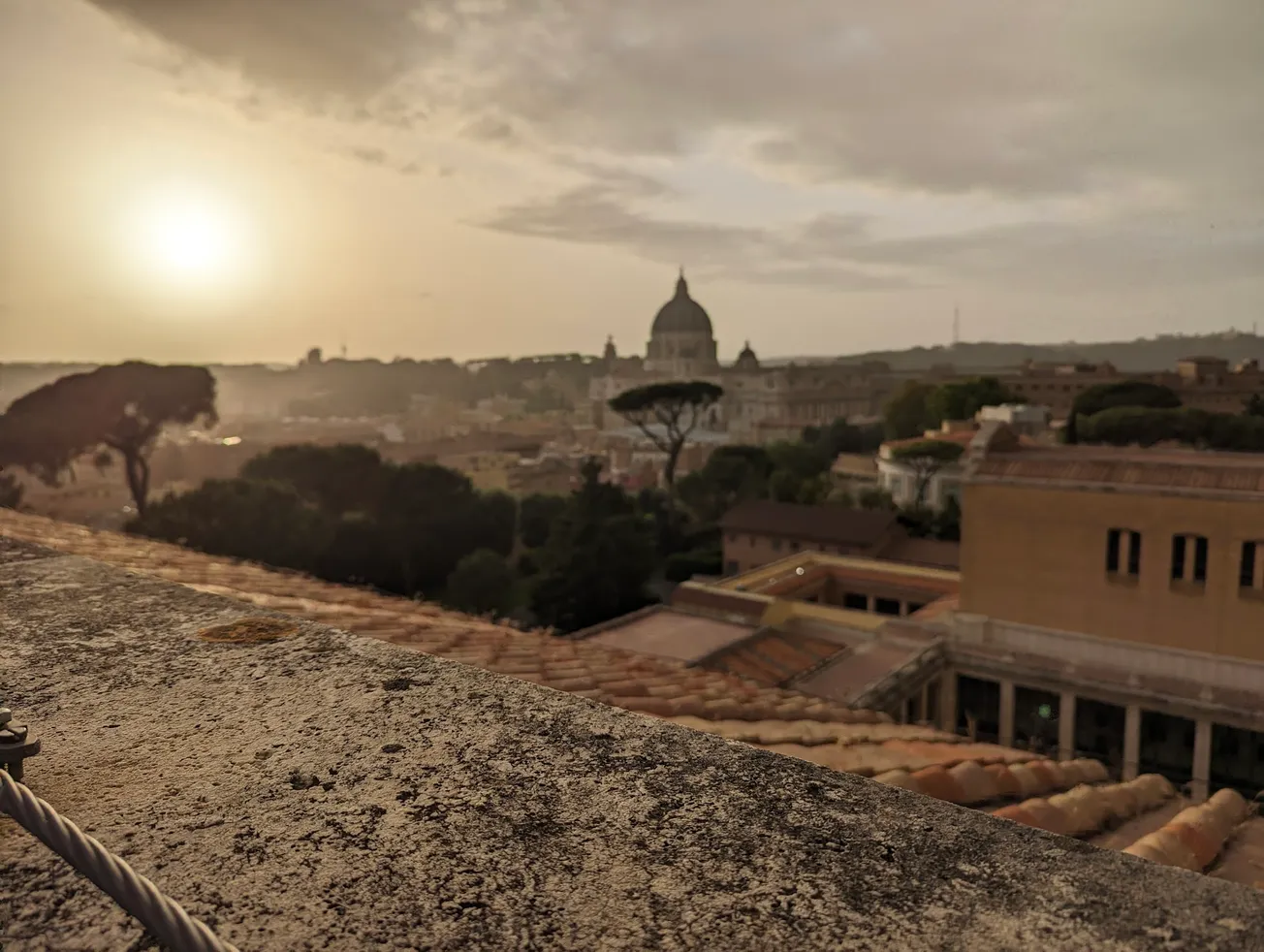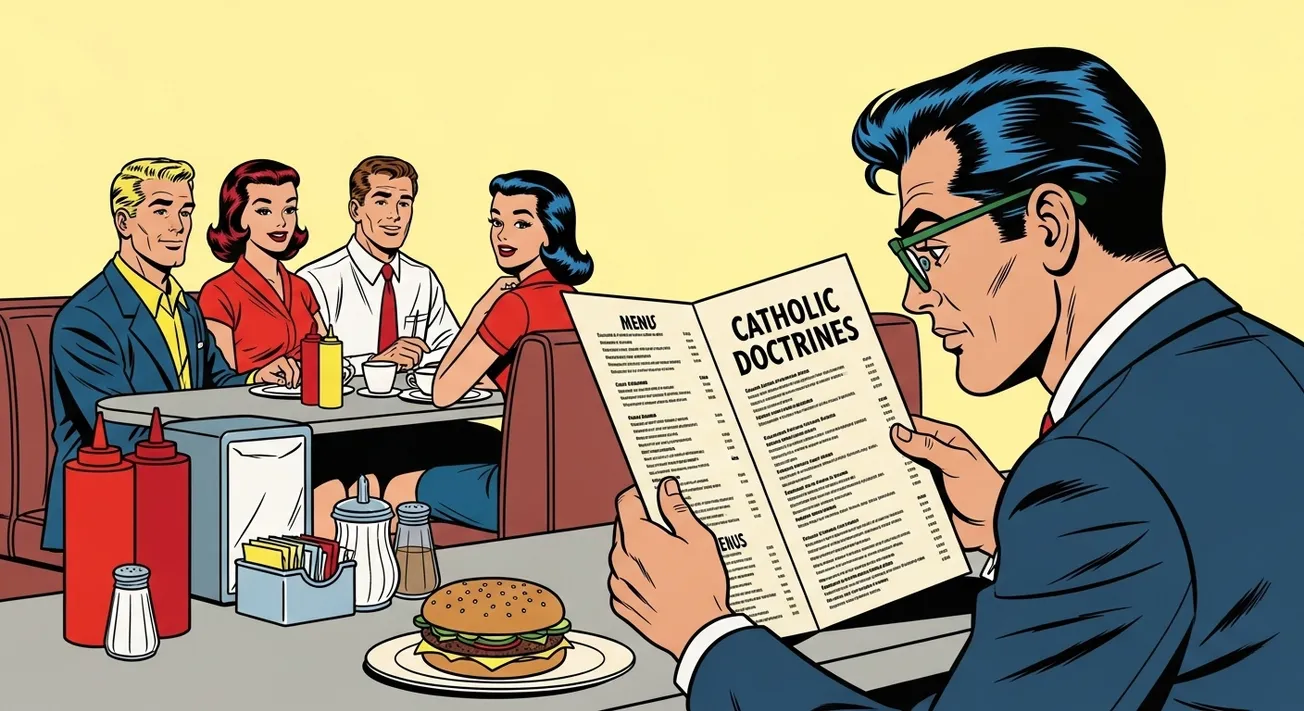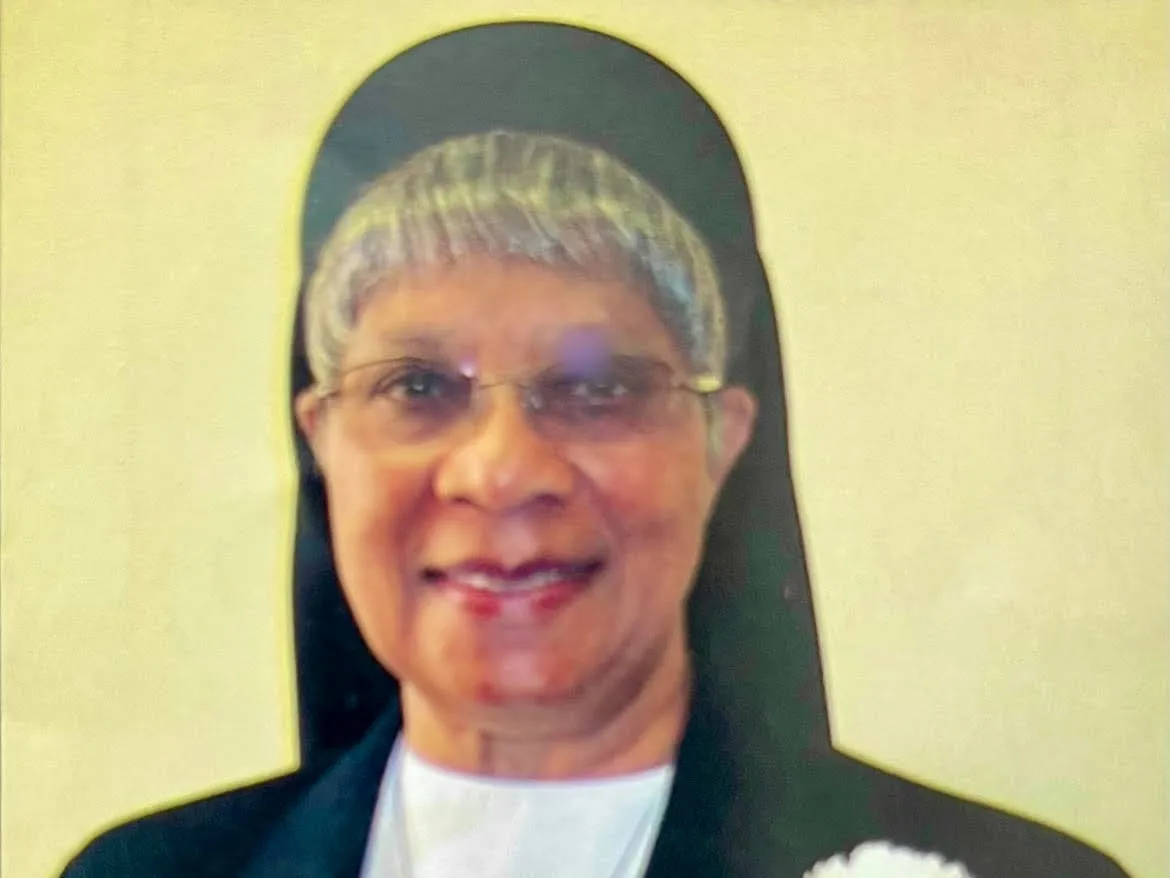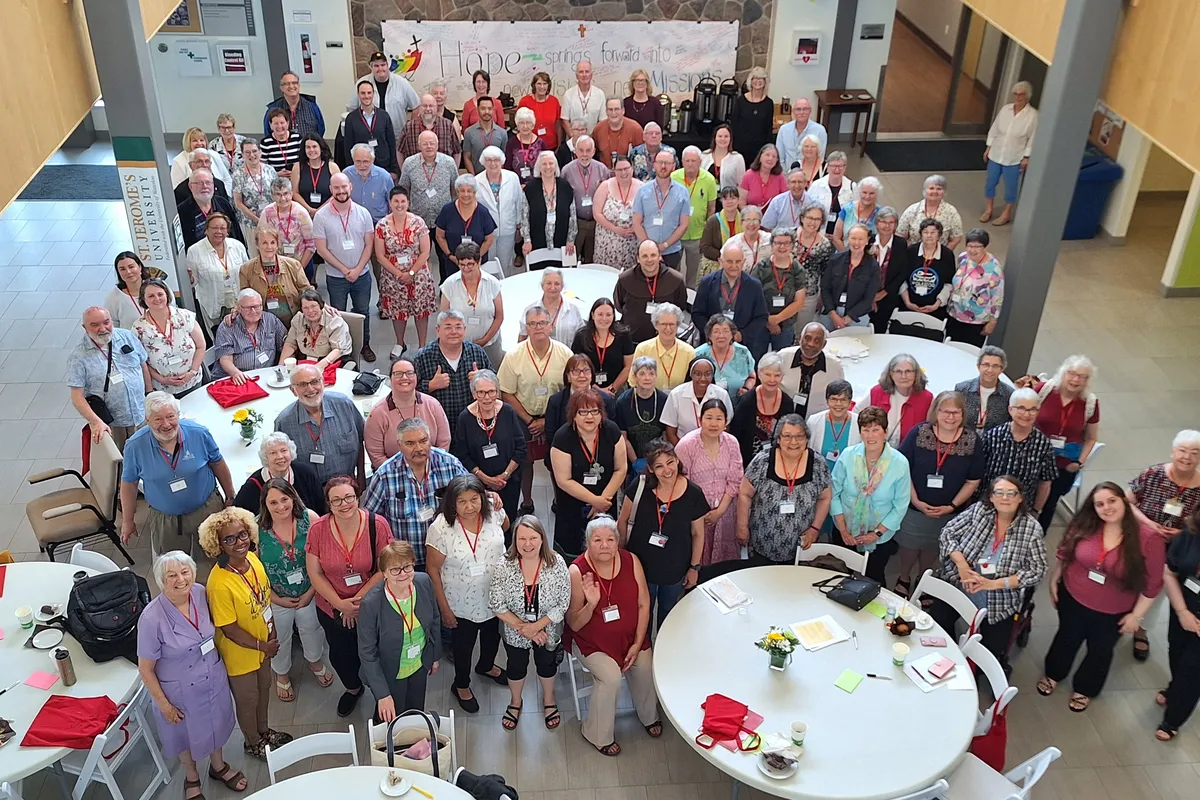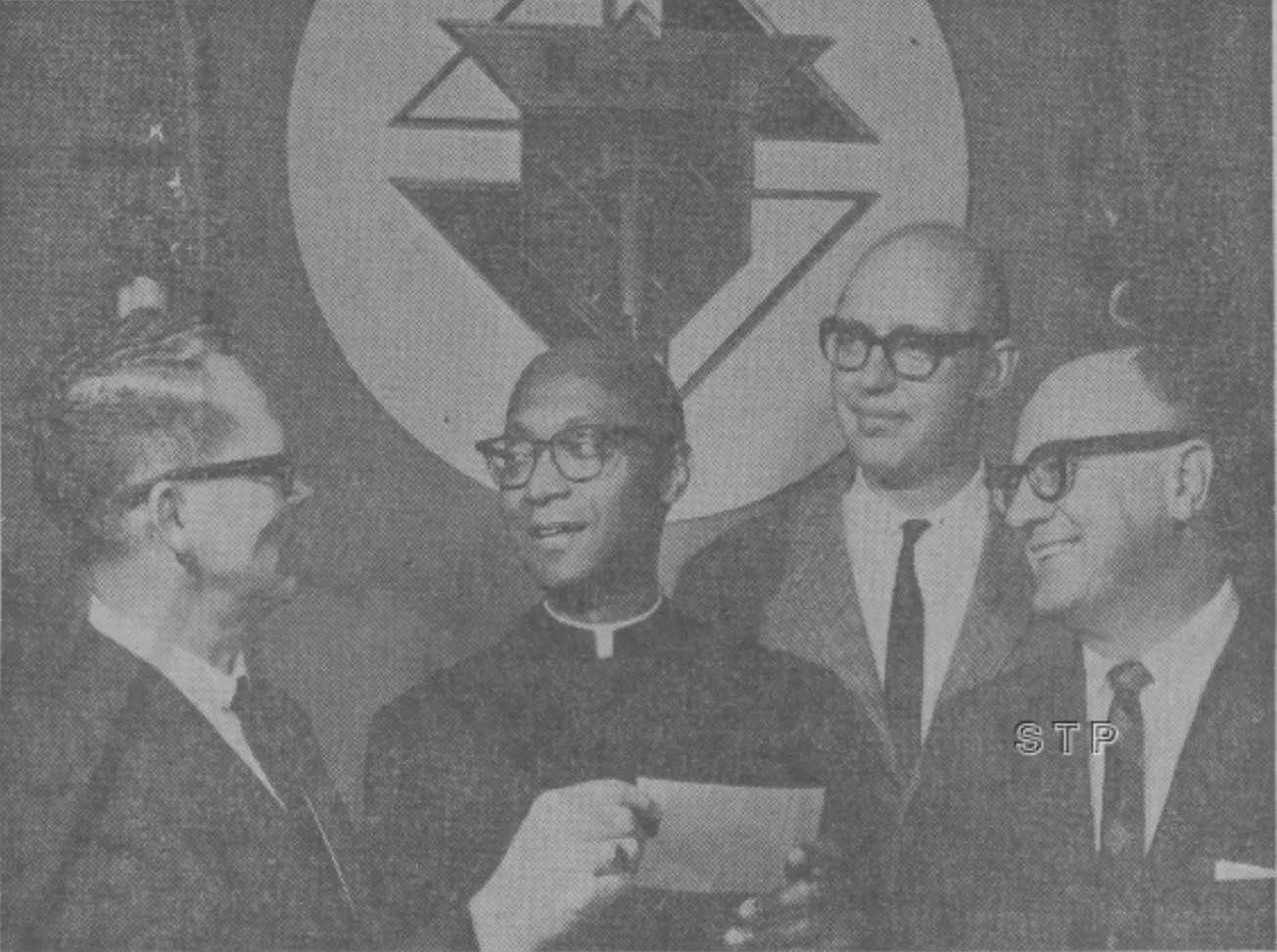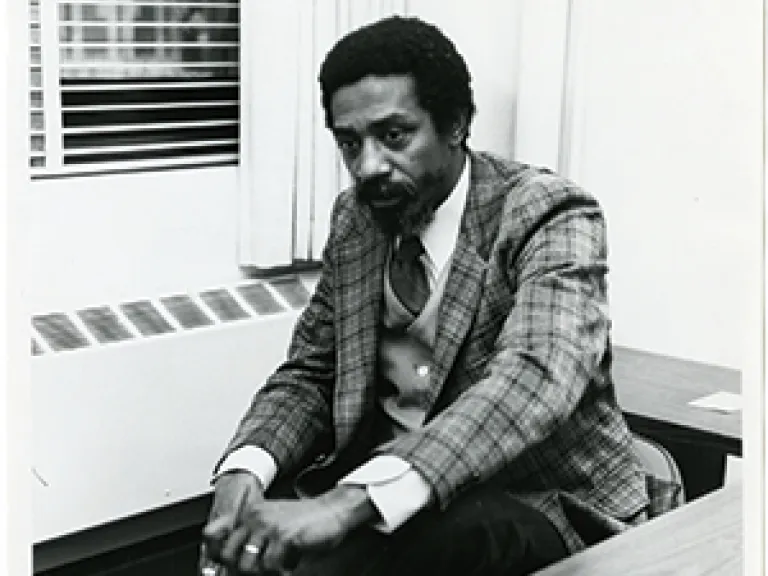Rome goes by many names: The Eternal City. The City of Seven Hills. Caput Mundi. It is seen as the center of Western civilization, an unending ode to the European imperial past, and a gracious nod to the history of Catholicism and, indeed, of Christianity itself.
Its nation-state enclave, Vatican City, is no less prestigious and has become synonymous with Rome itself, representing both the central nervous system of the world’s largest religion and the home of its vaulted head, the pope of Rome and all the world.
On a visit there this month, I was confronted with various contentious realities, most of them related to the idea of what it means to be Black and Catholic in a spiritual structure that, at its very geographical and cultural core, often seems indefatigably White. The point of the trip, organized for students from the Catholic campus ministry at Howard University, was to establish Rome in the minds of more than a dozen young Black Americans as a place “for all” and not just for a select and pale-skinned few, as is often imagined.
How one seeks to accomplish that goal is not particularly intuitive. It requires creativity, innovation, defiance, nerve. But it can be done, even if unintentionally.
On our trip, we visited several of the most well-known churches in the region, including the grand papal basilicas of St. Peter’s, St. Paul Outside the Walls, St. Mary Major, as well as those in Assisi: St. Francis and St. Mary of the Angels.
We walked cobblestone streets, drank from millennia-aged fountains, touched solid gold refinements financed by royal Roman officials and glorified high churchmen, and peered into histories otherwise unknown to many of our young American minds. It was several sights to behold.
“This really was 12 years in the making,” said Fr Robert Boxie III, the HU Bison Catholic chaplain and leader of the pilgrimage. Ordained a priest eight years ago, he was inspired during his time in Rome as a seminarian for the Archdiocese of Washington—one of the few African-American Catholics to have such an experience among a throng of European and European-American students.
“For me, it was not fair that they get to experience something like this and we couldn't… It just fired me up as soon as I got back home to do something like this. This is going to be the first of hopefully many pilgrimages to take this type of group here because this is yours, too. It just doesn't belong to them. It belongs to you as well,” he told the young college students and graduates who accompanied him this month.
“I hope that, with the things that we've done, you feel as though this is your Church, that this is a home for you, because the Church needs every single one of you to make the Church who she in fact proclaims and professes herself to be.”
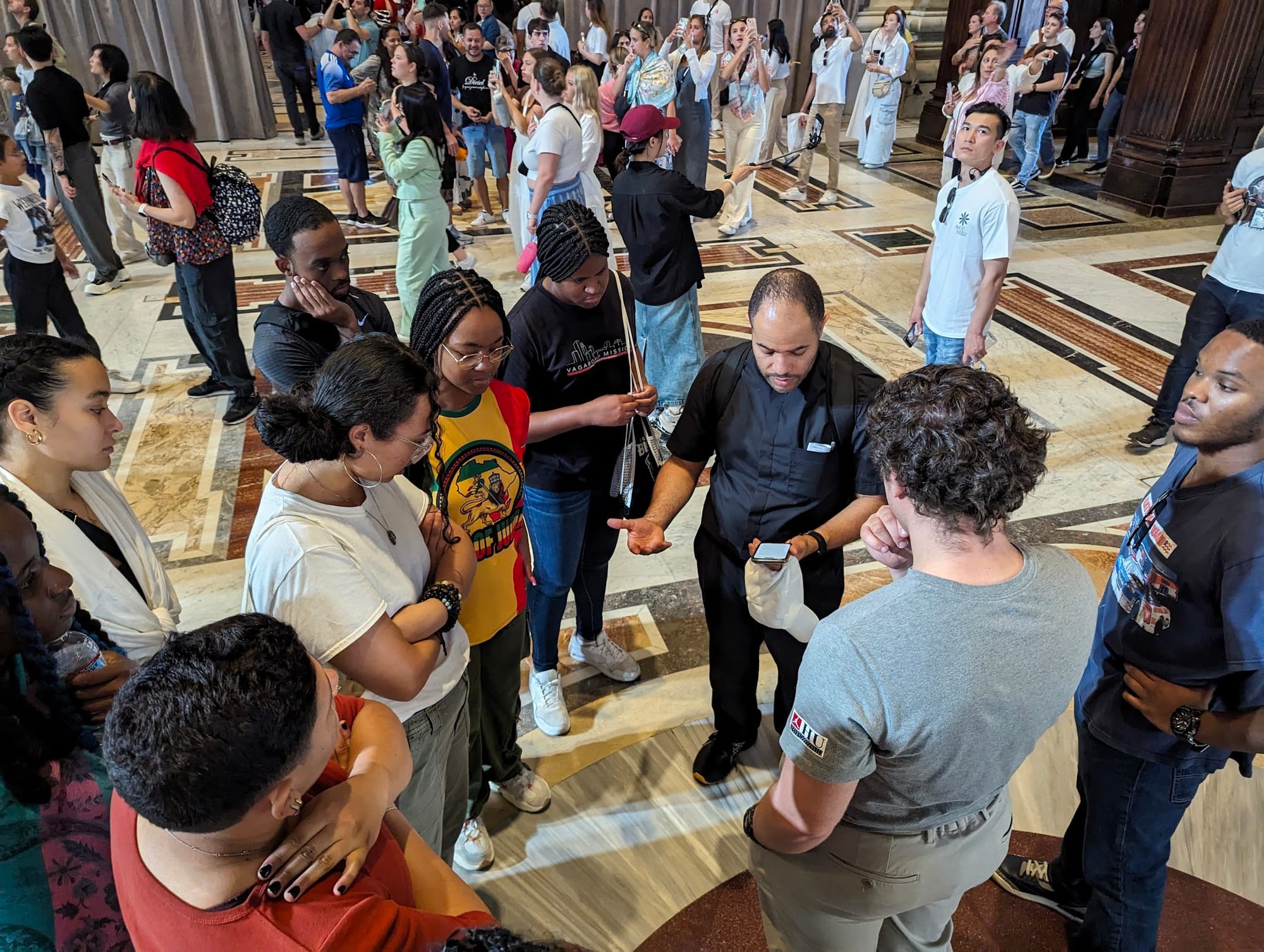
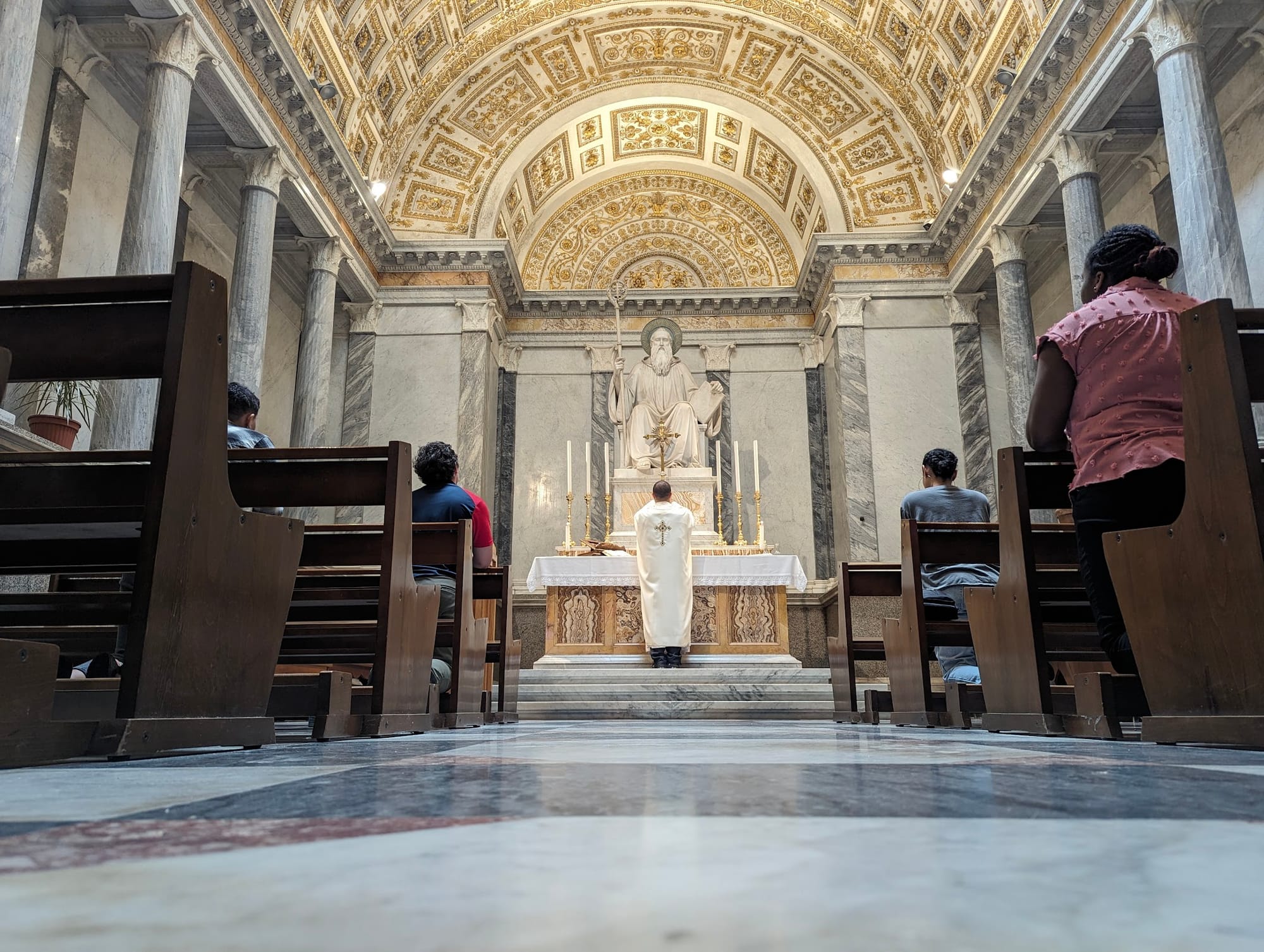
Left: Fr Robert Boxie III speaks to Howard University pilgrims during a tour of St. Peter's Basilica in Vatican City. Right: Boxie celebrates Mass in the Chapel of St. Benedict at the Basilica of St. Paul's Outside the Walls in Rome. (Nate Tinner-Williams)
Though the experiences of young African Americans are not a readily apparent theme of Rome, the echoes of the ancient African past are there—if you're looking for them.
During our first stop, in Vatican City at St. Peter’s Basilica, the largest church in the world, Boxie noted that just inside the church can be found a large imperial stone made of Egyptian porphyry, symbolizing the great wealth and power of the Holy Roman Emperor. Charlemagne, who inaugurated that dynasty, was crowned on the spot more than 1200 years ago, as were his successors. It is the only remaining disc from the Old St Peter’s Basilica built during the 4th century.
Though that version of the church and its surroundings no longer stands, their remembrance forms a key point of African influence in the heart of Christianity.
Outside the current, five-century-old St. Peter’s Basilica, near the entrance to the famed Vatican Necropolis, one can stand at the original location of the famous Vatican Obelisk. It was moved 800 feet east to the middle of St. Peter’s Square in 1586, where it is now perhaps the most recognizable landmark in all of Vatican City. Like most of the obelisks in Rome, it was imported from Egypt and originally commissioned by a pharaoh.
Our second pilgrimage stop was St. Paul Outside the Walls, located some distance from St. Peter’s but nevertheless holding an enduring bond with the church of the other leading apostle. Oddly enough, though St. Peter was the first pope in history, the pictorial monuments to the Bishops of Rome are located in the basilica of Paul, comprising a towering ring of portraits from Peter on down to the current pontiff, Francis. I couldn’t help but to quickly find the three Africans who served as pope: Victor I, Miltiades, and Gelasius I. (They are rendered there as White Europeans.)
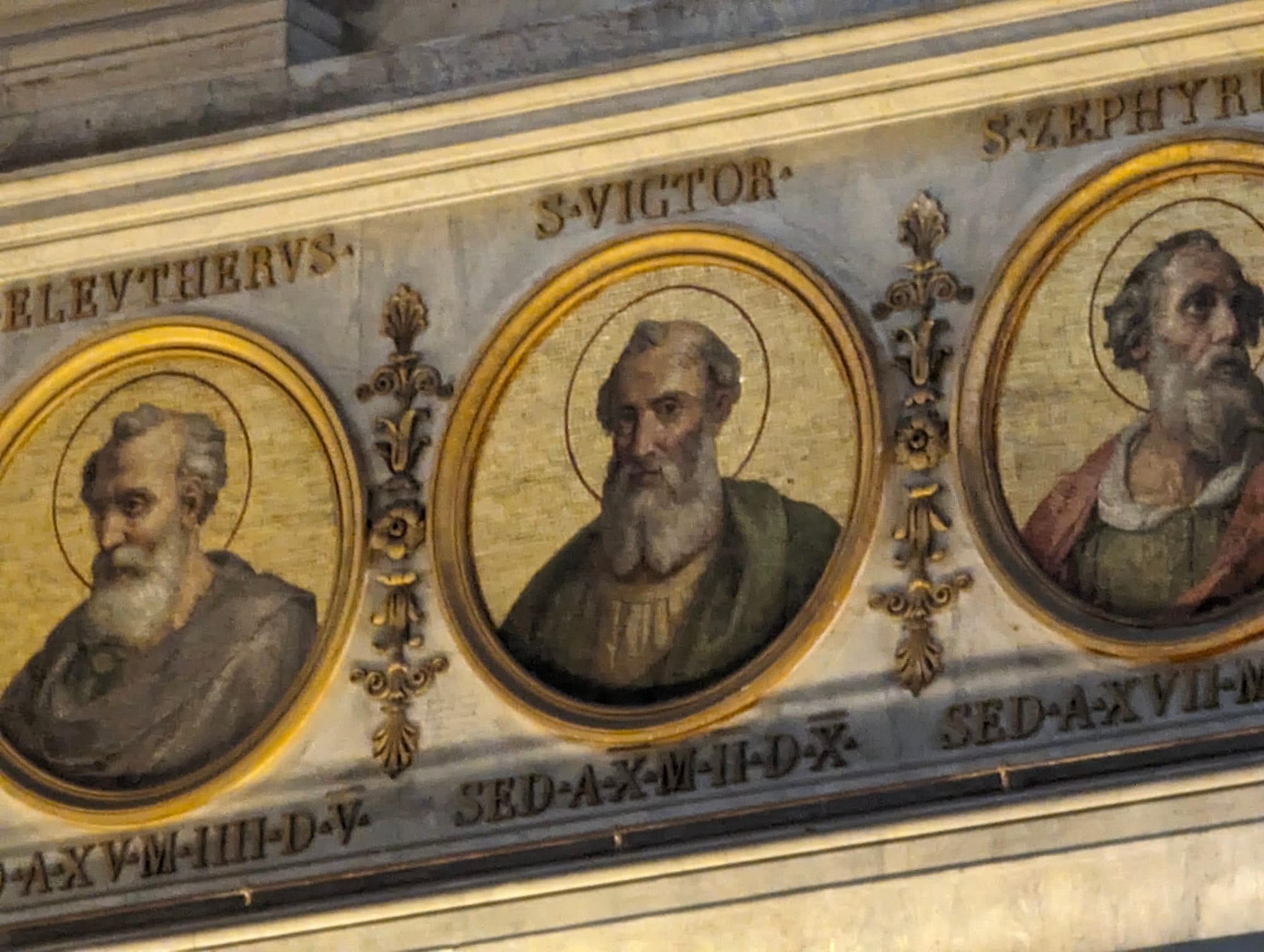
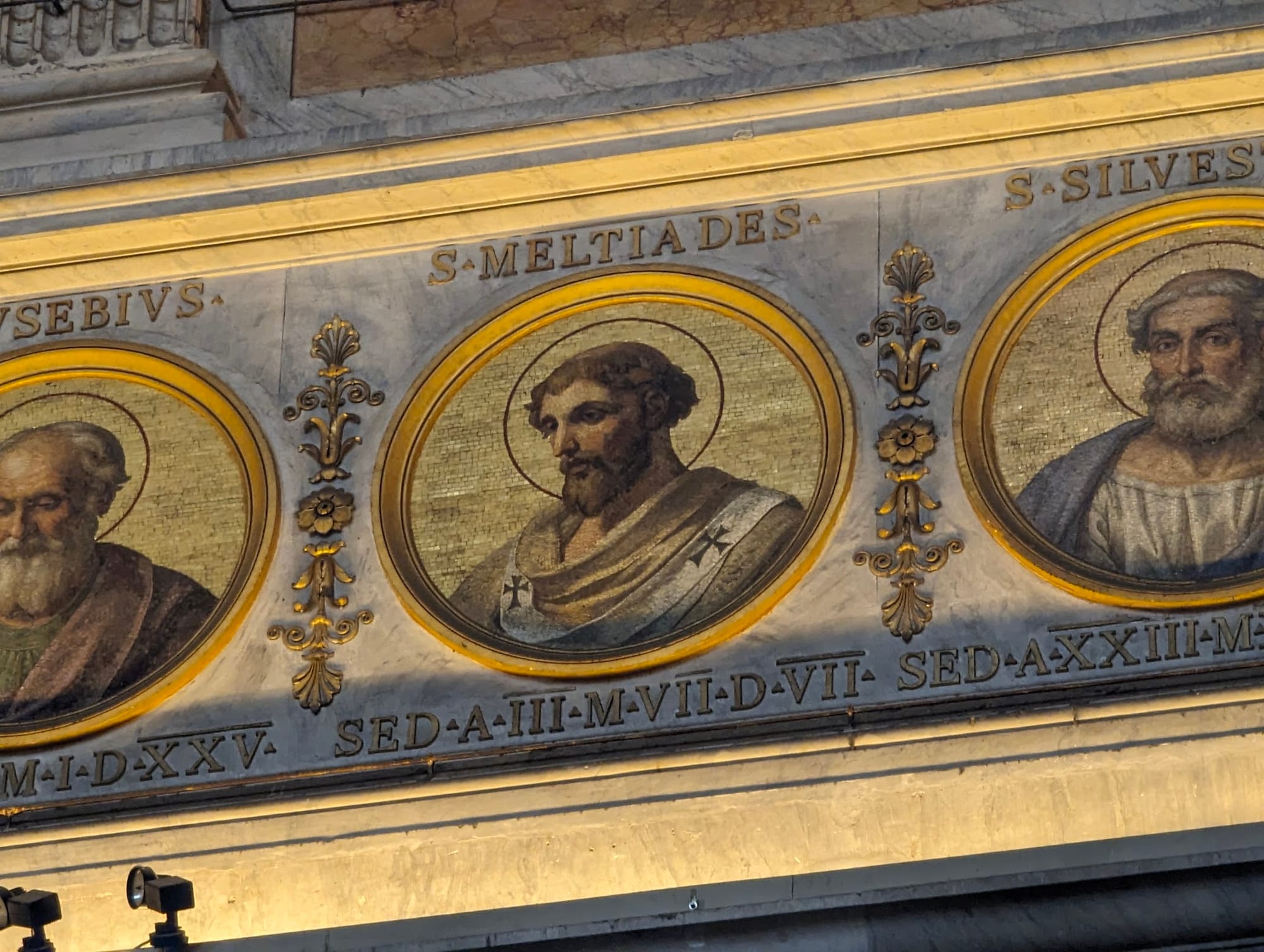
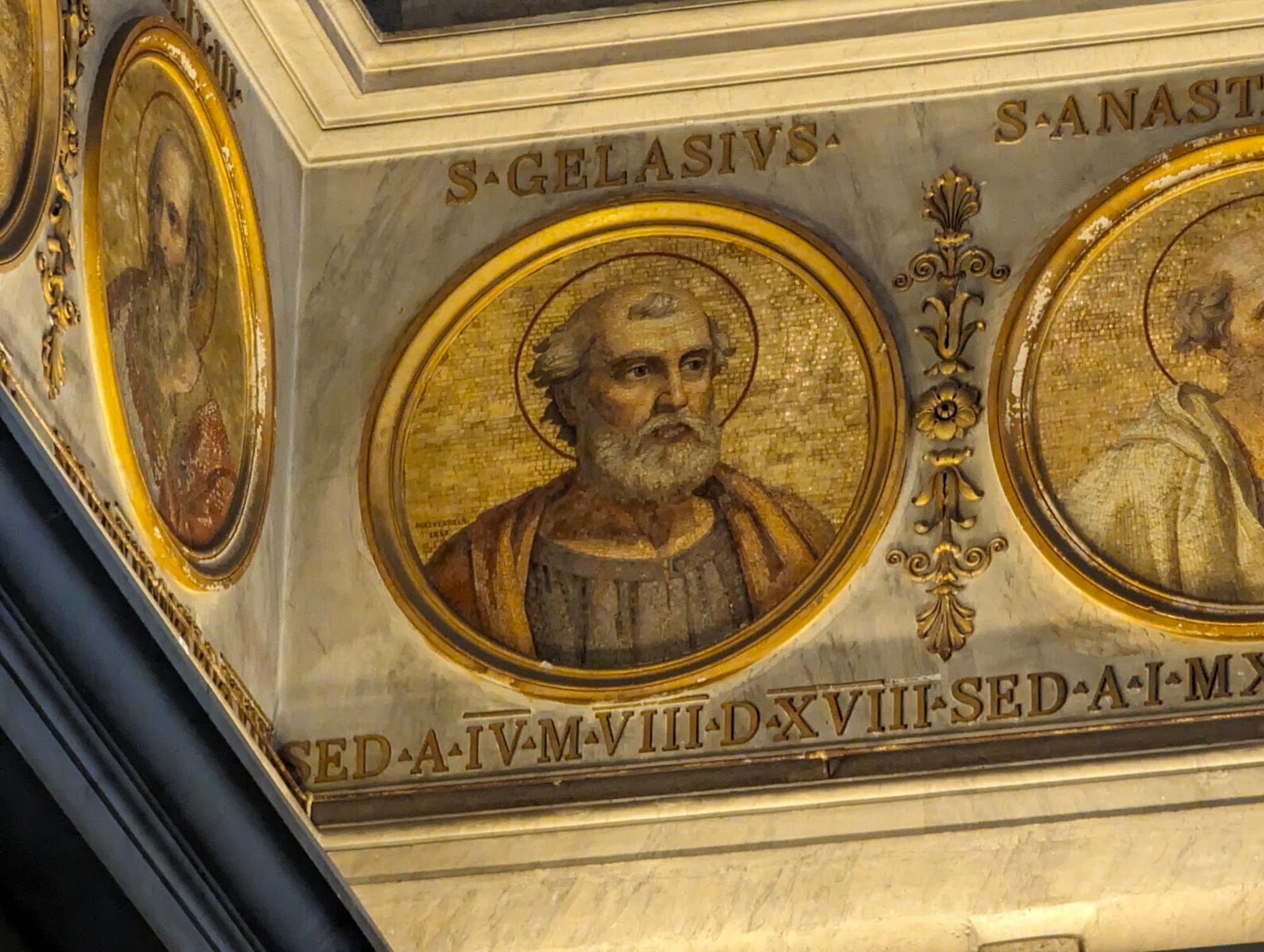
Portraits of African popes at the Basilica of St. Paul Outside the Walls. (Nate Tinner-Williams)
On Sunday, we attended Pentecost Mass with Pope Francis, who spoke in his homily of the universalizing power of the Holy Spirit, who in Biblical times spoke through the disciples in the many languages of the Jerusalem crowd for the feast of Shavuot. Quite fitting that a large and diverse group of the faithful, including our pilgrimage group, was there present to celebrate with the Holy Father. Icing on top, then, was getting an up-close look at the retired Cardinal Francis Arinze of Nigeria, as well as a procession of Afro-descent seminarians and priests participating in the liturgy.
Perhaps like in the Holy City on the day the Spirit fell, we in the Eternal City followed up the Mass with a round of singing, bringing our Black gospel hymns to the heart of St. Peter’s Square among the crowd of thousands awaiting Pope Francis' Sunday Angelus address. Our impromptu song (Kirk Franklin's "Melodies from Heaven") was apparently quite the spectacle for our Euro-Catholic onlookers, who quickly took out phones and cameras to save the sight. We were happy to share our gift, as one pope famously requested.
Later, on a tour with the Black Catholic historian Dr. Elizabeth Lev, we visited the Roman Pantheon, which I learned has been a church since the 7th century. For some in our group, it was a nexus point of cultural reflection; we had by then been on multiple days of tours seeing much of what is called the Church’s (and the West’s) greatest art, but saw little trace of Blackness among the statues, paintings, reliefs, and architecture—and this is not even to speak of the artists themselves. Small exceptions were present in the marvelous ceiling work of the Church of St. Ignatius, for example, but at least one pilgrim among us wondered aloud: What does it mean for our people’s history to be largely absent in these spaces?
Firstly, it was a matter of timing, Lev told us. The periods of greatest artistic production in the Church that most influenced Rome happened to intersect directly with the great loss of African (and, for that matter, Asian and Middle Eastern) influence in the Church due to the Islamic conquests, which began in the 7th century.
“What is important about pictures in Islam? Nada. So there’s no [such] artistic tradition that grows there,” she said. “All of a sudden, the people who are Christians and are making art are the White people in Europe.”
Their focus was on the Greek ideal of beauty, she said, and that resulted in a great marvel of artistic flourishing that nevertheless champions what we now would call a purely White aesthetic and perspective. Even the few Black depictions we saw in Rome were those of a foreigner, or representative of a foreign Sub-Saharan African whole.
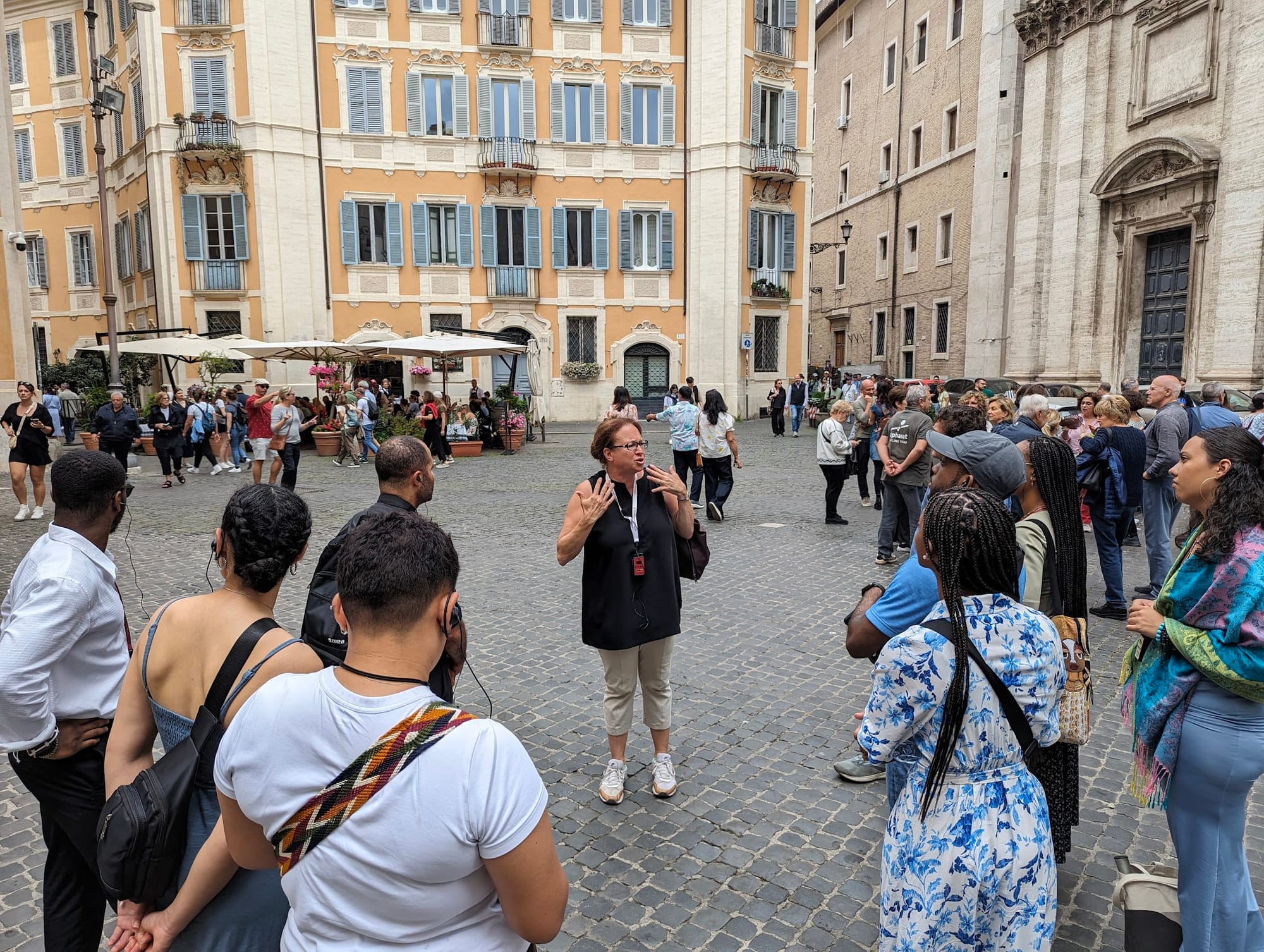
African-American heritage is even harder to spot in Rome. Our visit to the Pontifical North American College (NAC) was surely a treat, not least because it is the alma mater of Fr Boxie, but also because its first class was supposed to include the world’s first openly African-American priest. The NAC class of 1859, whose graduation photo we viewed, conspicuously misses one William Augustine Williams, a Black Catholic sent to Rome for seminary in 1855 but who left due to pressure from an American Church hierarchy not nearly ready to accept his kind as a minister of God. It was a tragic note in an otherwise pleasant visit to our nation’s own seminary in Rome—where multiple Black men study today.
We as pilgrims were left with a question and a challenge. Who are we as Black Catholics in the Church today, and what is our role in shaping the Church of the future rather than the preserved past? Some of the Howard students spoke of the need for more pilgrimage to places where Africa and/or Blackness are valued as an integral part of the Church. One spoke of Egypt, and another of Ethiopia. I myself thought of the West African Christian hotspots, the land of our Transatlantic ancestors like the Ivory Coast, Ghana, and Nigeria.
Perhaps chief among them, however, is the Congo region, where Catholicism first took hold in the homeland. The Kingdom of Kongo became the first African Catholic nation with the conversion of King Nzinga-a-Nkuwu (later João I) by the Portuguese in 1491. The growth of the religion there was hampered somewhat by an uneven slave-trading partnership between Kongo and the European colonizers, but the interplay led to what is now one of the only notable Black Catholic representations in Rome.
The Kongolese king Álvaro II appointed an ambassador to the Holy See in 1604, his cousin Antonio Emanuele Ne Vunda, making him the first African diplomat not just to the pope but to any European nation. One crucial aim of his inaugural trip to Rome was to gain for the Kongolese some measure of control over the growing Catholic presence in their country, which to that point had been led exclusively by White missionary bishops. The Portuguese reigned supreme, but the threat of Spanish interference eventually led to both parties targeting Ne Vunda as a persona non grata while he traveled from the African coast to Colonial Brazil, mainland Portugal, and finally to Rome itself. His ill treatment by the dueling European powers led to his death shortly after arriving in the Eternal City, where he received Last Rites from an enthusiastically pro-Kongolese Pope Paul V in 1608.
Following Ne Vunda’s funeral Mass at the Major Basilica of St. Mary Major—one of the four most important churches in all of Catholicism—the pope honored his historic, though tragic, journey and the Catholic faith of his people with a bust above his grave inside the church’s baptistery. The black marble work was created from a death mask of the erstwhile African envoy, making for the first European sculpture of a known African and one of the most impactful stops on the penultimate day of our tours.
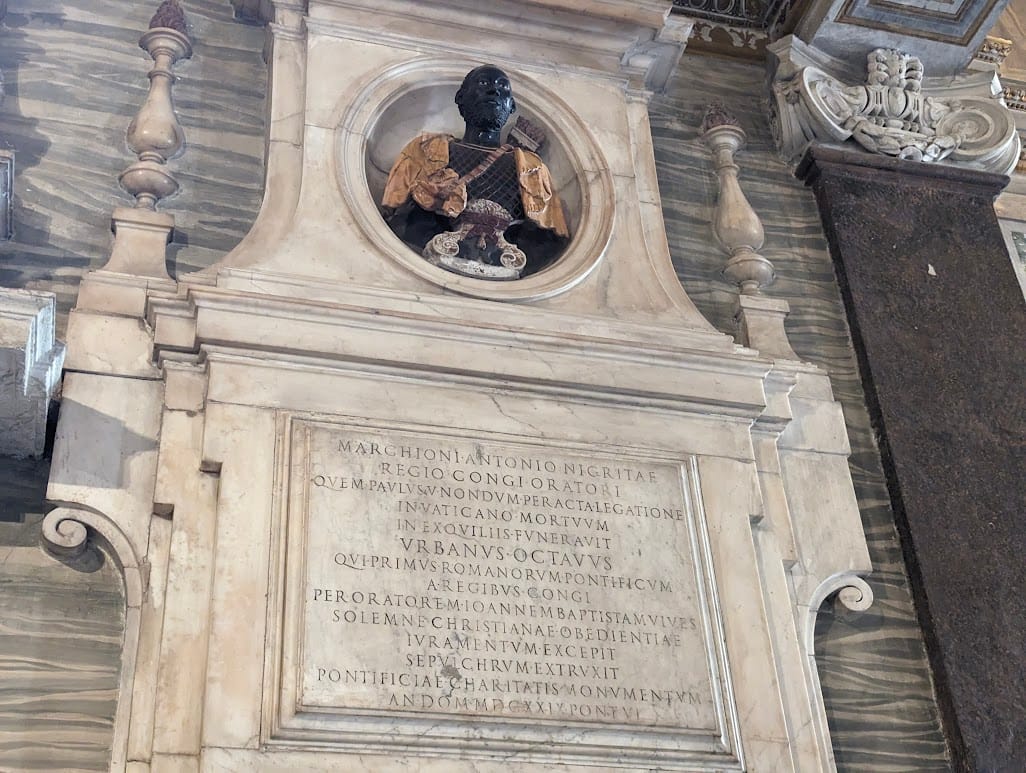
Another that cannot escape mention was the pope’s cathedral, the Major Basilica of St. John Lateran, outside of which stands the tallest Egyptian obelisk in the world.
More than 3,400 years old, it is replete with hieroglyphics dating to Pharaohs Thutmose III and IV and was moved in the fourth century to Rome from Alexandria, the great African center of the early Christian Church, alongside Jerusalem, Antioch, Constantinople, and Rome.
It is all too fitting that the Lateran Obelisk now stands adjacent to the church where Venerable Augustus Tolton achieved what William Williams could not, being ordained there as the first openly Black American Catholic priest in 1886—setting off a chain of events that would lead to an eventual boom in conversions stateside and a flowering of African-American representation in the Church. I wonder if he too, on his ordination day or on some other occasion, might have seen there in Rome this great monument of Africa and found solace, however briefly.
At our pilgrimage Mass in Assisi on the last day of tours, Fr Boxie reminded us again that the Eternal City is for all of us. We were not at exclusively Catholic group. Not all were even Christian or of African descent, but the message repeated throughout the week, in our conversations even if not in the places we visited, was clear: God's house, in Italy or elsewhere, is better with all of us, and has suffered greatly by excluding those whom God accepts.
Whether in the catacombs of ancient Rome, the college halls of great American priests, or the churches where our ancestors are buried, we as God's children—and perhaps especially as Black people in the Catholic Church—belong wherever we are called. This month, on our trip, we came to understand it well.
Nate Tinner-Williams is co-founder and editor of Black Catholic Messenger.


